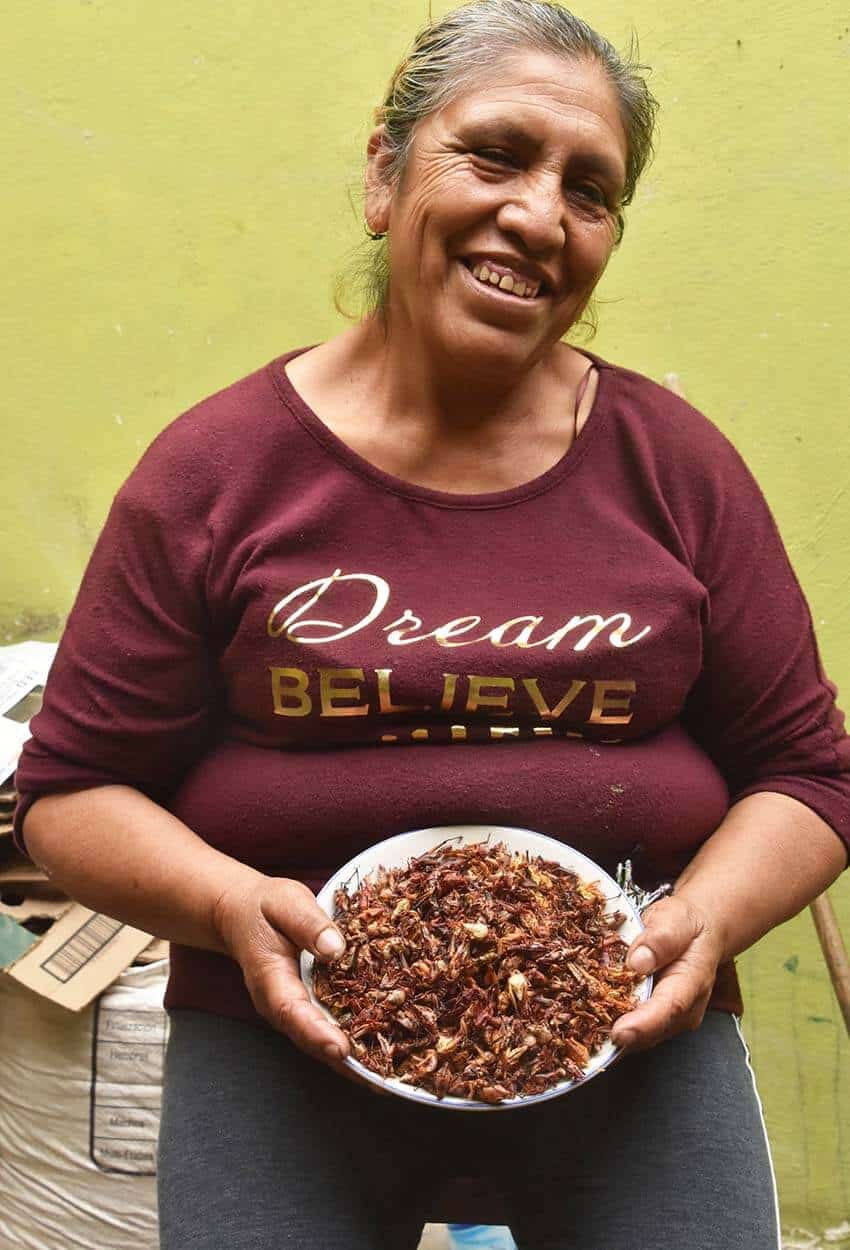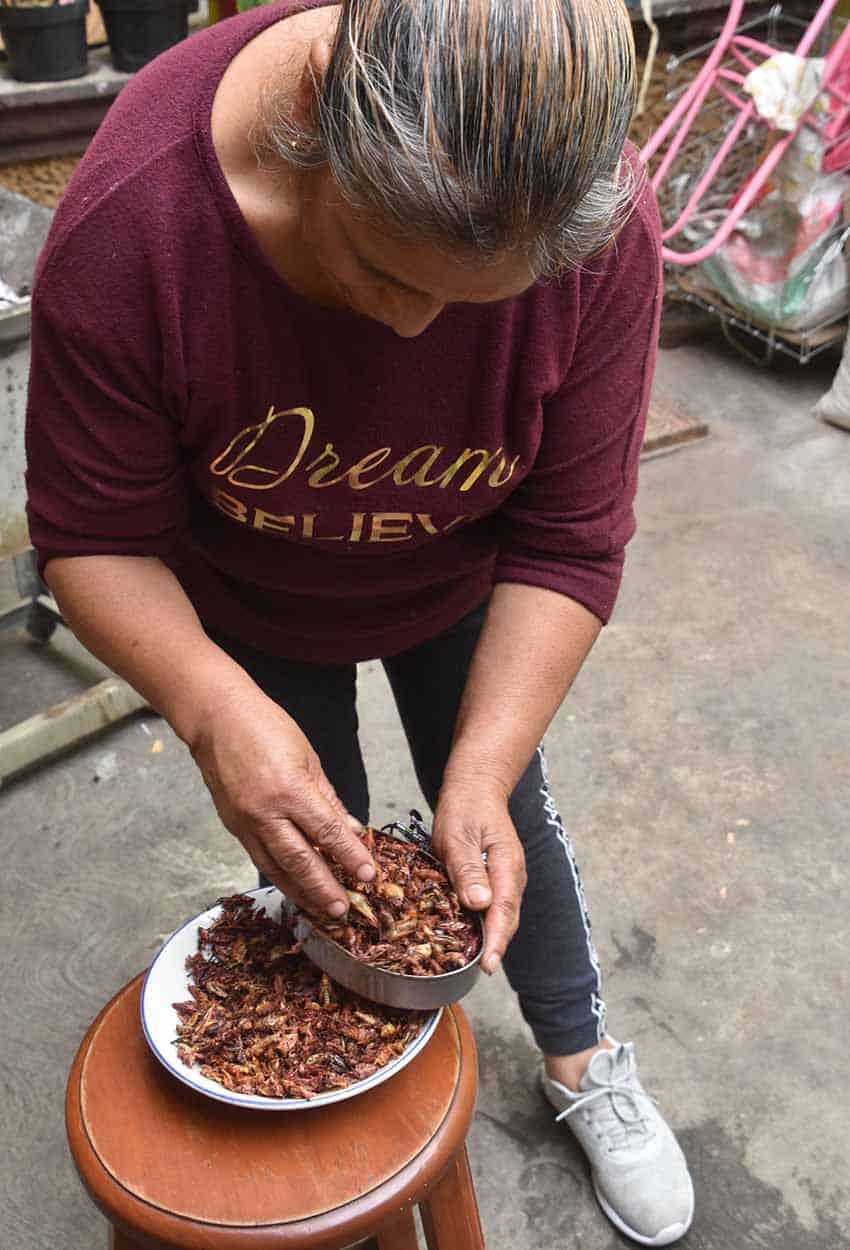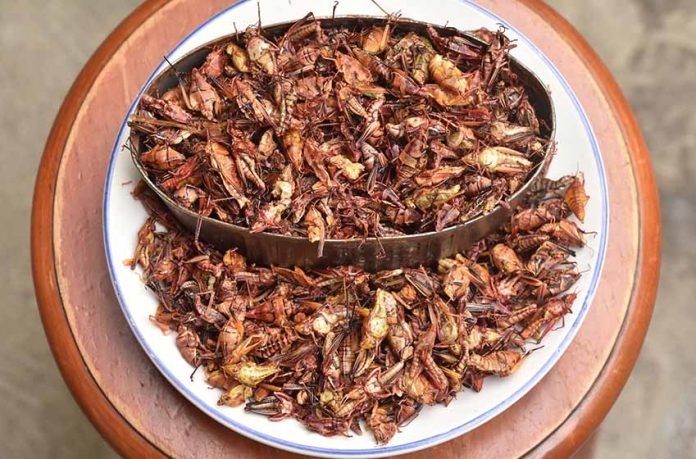Americans appear to be finally catching onto something that people in Mexico — and many other countries — have known for probably tens of thousands of years: bugs are a great source of protein.
Approximately two billion people in 130 countries are already eating insects — and apparently finding them quite tasty. In Mexico, people eat gusanos (worms), chicatanas (winged ants) and escamoles (ant larvae), among several other insects, but the most popular choice is probably chapulines, or grasshoppers.
The chapulín, derived from chapolin, a Náhuatl word that means “an insect that jumps like a rubber ball,” is an excellent alternative to meat. They contain between 60% and 70% protein (different articles claim different numbers) — more than beef — and all of the essential amino acids.
In addition, they’re high in Vitamins A, B and C; fiber; and several minerals.
Hargol FoodTech, an Israeli-based company, is the first that’s been able to grow chapulines on an industrial scale, and it’s recently begun distributing its products through companies in the United States. Right now, its main product is chapulín powder, but it has plans to sell whole insects. The company has succeeded in growing chapulines in captivity by using fairly high-tech techniques and equipment.

But in pueblos like San Pedro Yancuitlalpan, Puebla, where Concepción Fernández has a small food stand, things are decidedly low-tech. The chapulines she uses are all local and wild. “I buy them from workers who catch them using nets,” she said.
In a small room adjacent to her kitchen, Fernández lights a pile of charcoal with a piece of ocote, wood from a species of pine tree. Although she has a gas stove in her kitchen, she cooks most of her food using charcoal. “Carbón (charcoal) gives a different flavor to all types of food,” she said.
Once the coals are ready, she heats oil in a large pot and adds a significant amount of garlic (like virtually all traditional cooks, she measures nothing). It’s fried to a deep brown, and then she adds enough chapulines to fill half the pot.
As I watched, Fernández stirred these constantly for three or four minutes before adding a small handful of chile. “This is chile de árbol,” she said. “It is a spicier chile.”
She fried the insects for around five more minutes until they were golden brown and then poured them into a large strainer. To a second batch, with slightly larger chapulines, she added a chile called chiltepín, one that was less spicy than the chile de árbol. She’ll sometimes use other chiles, including chile pasilla.
“Here, chapulines are available all year,” she said. They’re prepared one of two ways: fried or natural. The latter method involves boiling them and adding lime. “I prefer fried for the flavor,” said Fernández, “but the majority of people eat natural because it doesn’t have fat.”

Chapulines are usually eaten as a snack, sold in small plastic bags or sometimes wrapped in paper cones. In many traditional pueblos, foods like beans, rice and chapulines aren’t purchased by weight but by latas — cans or tins. Fernández fills a large sardine tin with them and charges 40 or 50 pesos.
Chapulines can also be added to foods like chile navideño or stuffed inside enchiladas. When asked about the flavor, Fernández said they taste like fish. She also sells a worm, the cuetla, which is dark gray or black and about the length and width of an index finger.
Several restaurants in the United States have started offering dishes made with grasshoppers and other insects, some for their flavor and some because it’s becoming increasingly apparent that bugs pack lots of protein and that factory farming simply isn’t sustainable.
Farming chapulines releases far fewer greenhouse gases, uses a minimal amount of water and requires far less land than growing animals like cows and pigs. The grasshoppers also produce much less excrement.
Corporations are also beginning to take notice of the increased interest in insects as a food source. In 2019, an article in Business Insider reported, “The insect protein market could be worth US $8 billion by 2030, up from less than $1 billion in 2019.”
Business Insider cited an analysis by Barclays stating that as the world’s population continues to grow, more people will be eating insects as a major protein source. They believe this may lead to grocery chains and food corporations selling them.
Fast-food companies have already caught on to the trend toward a meatless future: Burger King and McDonald’s sell veggie burgers, and KFC offers a vegan substitute for their fried chicken. It’s not a stretch to think that they’ll have insect-based foods on their menus in the near future.
Fernández sells her chapulines and other foods in the Atlixco market, at her small stand on the outskirts of San Pedro Yancuitlalpan and from her home. In the market, she’s noticed a decided increase in sales and a new group of people interested in them.
“Many people are now buying them and taking them to the U.S. They like the quality and the fact that they are high in protein,” she said, adding, “One lata of chapulines has the same amount of protein as a kilogram of meat.”
She enjoys eating them and extols their benefits. “I do not eat them every day,” she said, “but probably two or three times a week. They are pure protein.”
But she also gave some important advice about eating them:
“It is best to remove the legs first. They can get caught in one’s throat.”
Joseph Sorrentino, a writer, photographer and author of the book San Gregorio Atlapulco: Cosmvisiones and of Stinky Island Tales: Some Stories from an Italian-American Childhood, is a regular contributor to Mexico News Daily. More examples of his photographs and links to other articles may be found at www.sorrentinophotography.com He currently lives in Chipilo, Puebla.
